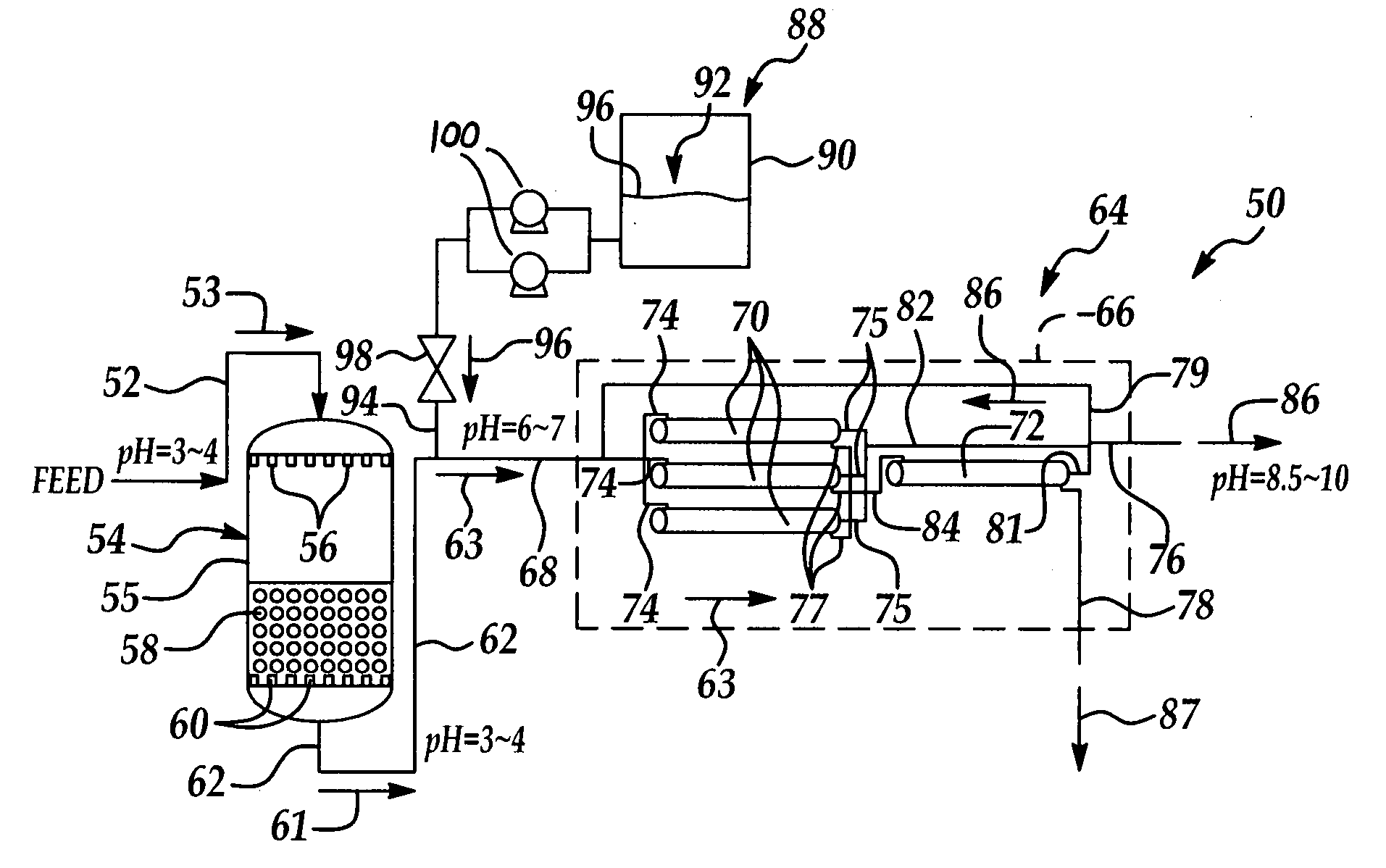Base dosing water purification system and method
- Summary
- Abstract
- Description
- Claims
- Application Information
AI Technical Summary
Benefits of technology
Problems solved by technology
Method used
Image
Examples
Embodiment Construction
[0030] The present invention contemplates a water purification system having a base dosing system for rapidly raising the pH of acidic wastewater, typically from semiconductor fabrication processes, as the wastewater flows from an ion exchange unit to a high-efficiency reverse osmosis (HERO) system. The present invention further includes a base dosing method for raising the pH of acidic wastewater during treatment of the wastewater. The base dosing system includes a base dispensing tank that contains a sodium hydroxide solution of high concentration. The sodium hydroxide is dispensed into the wastewater as the wastewater flows from an ion exchange unit, raising the pH of the wastewater from about 3˜4 to about 6˜7 prior to entry of the wastewater into a HERO system. The HERO system further raises the pH of the wastewater to about 8.5˜10. The resulting purified, de-ionized water is suitable for use in semiconductor fabrication processes, for example. However, it is understood that the...
PUM
| Property | Measurement | Unit |
|---|---|---|
| Time | aaaaa | aaaaa |
| Efficiency | aaaaa | aaaaa |
Abstract
Description
Claims
Application Information
 Login to View More
Login to View More - R&D
- Intellectual Property
- Life Sciences
- Materials
- Tech Scout
- Unparalleled Data Quality
- Higher Quality Content
- 60% Fewer Hallucinations
Browse by: Latest US Patents, China's latest patents, Technical Efficacy Thesaurus, Application Domain, Technology Topic, Popular Technical Reports.
© 2025 PatSnap. All rights reserved.Legal|Privacy policy|Modern Slavery Act Transparency Statement|Sitemap|About US| Contact US: help@patsnap.com


